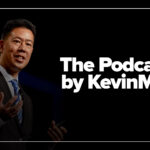Most of us think of earwax as a nuisance–something to be cleaned out and discarded. But, did you know that this sticky substance is a natural part of your body that can reveal information about your health?
If you regularly clean your ears at home, it’s worth a second thought. Although a part of general hygiene, overdoing it–or using hairpins, toothpicks, and other pointy tools–can do more harm than good. Specialists warn that at-home earwax removal kits can be risky too. Scientists are discovering that earwax actually has “near-magical properties.” Instead of digging around, it’s best to let trained professionals safely collect and analyze your earwax.
May is National Hearing and Speech Month in Canada and Speech-Language-Hearing Month in the U.S. It’s a great time to celebrate doctors, audiologists, and scientists–those who promote healthy hearing and overall well-being. Researchers are exploring the overlooked world of earwax analysis and what it can reveal about our health. While a promising field and a way to monitor health conditions, it’s still mostly experimental with untapped potential.
Just like everyone has a unique fingerprint, our earwax is also distinct. Also known as cerumen, earwax is a mix of dead skin flakes, gland secretions, and hair, protecting the outer ear canal. Everyday cerumen travels from the inside to the outside of the ear at the speed of about 0.05 millimetres, which is a similar speed to fingernail growth.
Scientists are finding that analyzing a person’s earwax chemistry can provide insight into diagnoses and diseases such as cancer, Alzheimer’s, and heart disease. Recent studies are tracing stress hormones, environmental pollutants, and drugs. Even the colour of your earwax can indicate potential health problems, such as yellow to green earwax seen in ear infections and streaks of blood caused by injury to the ear canal.
Researchers have found that testing earwax with a lab test called a cerumenogram may help detect signs of cancer. This simple test looks at tiny chemical changes in earwax, some of which are linked to different forms of cancer. A recent study even showed that it can spot early warning signs before cancer fully develops. Because it’s fast, painless, and inexpensive, this test could one day become a helpful tool for diagnosing, treating, and possibly preventing cancer.
Yet, there is no universally accepted method to collect and analyze earwax. Since this is an emerging area of early-stage research, earwax is still not widely recognized or used by doctors as a diagnostic tool. And costs remain high without commercial production of devices and insurance coverage. The Ontario Health and Insurance Plan (OHIP) does not currently cover the cost of earwax removal, with some exceptions. In Canada, earwax removal can range between $45–90. In the U.K., millions without funding or support for earwax services are calling for action from their government via the Stop the Block campaign.
Earwax is more than just gunk–it’s a goldmine packed with clues about our past, snapshots of our present, and secrets to our future health. As interest in earwax analysis grows, here are five ways we can unlock its full potential in Canada and beyond:
- Scientists are only beginning to uncover what earwax can tell us. We need to fund studies to continue exploring earwax as a health tool.
- As with any new medical approach, we need proper guidelines to make sure earwax analysis is used safely and responsibly.
- Governments, universities, industries, and insurers should all invest in bringing earwax analysis into mainstream health care.
- If earwax analysis can help prevent illness early, it should be included in health insurance plans–just like blood tests or checkups.
- Through public campaigns and social media, let’s shift the mindset: earwax isn’t gross–it’s a health record worth listening to.
Our earwax quietly builds up over time, but holds loud potential. As a non-invasive and accessible sample, it’s a promising addition to the diagnostic toolkit. It’s time we start listening to what it has to say.
Sandra Vamos is a health care consultant. Domenic Alaimo is a medical student.

















![How genetic testing redefines motherhood [PODCAST]](https://kevinmd.com/wp-content/uploads/Design-3-190x100.jpg)
![A leader's journey through profound grief and loss [PODCAST]](https://kevinmd.com/wp-content/uploads/The-Podcast-by-KevinMD-WideScreen-3000-px-4-190x100.jpg)



